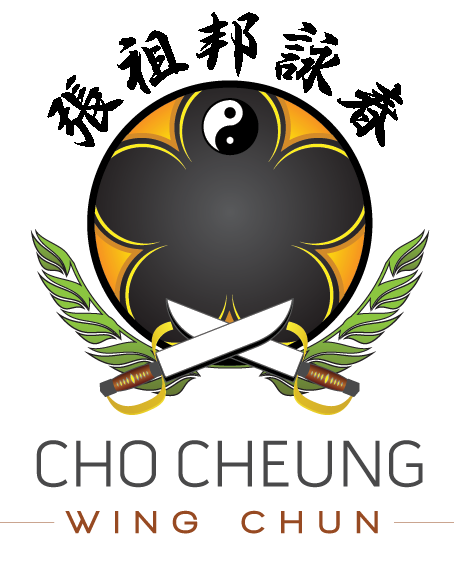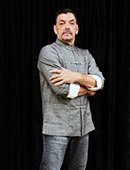The Origins
The history of Wing Chun was been passed down through word of mouth over many generations, so many different versions of the story had appeared over time. Thus, this story of Wing Chun is not necessarily accurate down to the exact detail. Instead, it is a guideline for what generally happened. Recent history contains more accurate facts, due to the writings and recordings of modern society.
Buddhist temple in China was the birthplace of all Kung-Fu. The temple were divided into chambers, or rooms, where each chamber teaching a certain style, weapon, or skill. However, approximately 300 years ago, the temple was burned to the ground by the Manchu government, killing many of the monks and nuns. A few escaped, including the Five Elders: five who had mastered every chamber. Only one of the Five Elders was a nun; her name was Ng Mui.
After the temple burned down, Ng Mui traveled the country, hiding from the Manchus. She settled on top of a mountain in southern China, where she began to think about all of her martial arts knowledge. She realized that much of what she had learned was ineffective or impractical for a small, frail woman to use on a larger man. She also realized that a woman could not match a man's stamina in a long fight.
So she began to revise everything she knew, discarding those techniques that relied on strength or size, were inherently slow, or which wasted motion and synthesized all of the remaining skills into a core of fast, effective, economic techniques that relied on things like the body's structure for power; simultaneous defense and attack for economy; and angle, distance, and redirection of the opponent's energy instead of strength.
One day Ng Mui made her usual trip to the village at the bottom of the mountain to buy food and supplies. While at a bean curd stand owned by a father and his daughter, Ng Mui noticed that the two seemed troubled. She soon found out that the girl, named Yim Wing Chun, was being pressured into marriage by a local bully who had threatened her father with physical harm if she refused. Sensing their desperation, Ng Mui revealed her identity and offered to train the girl in kung fu. She suggested that Wing Chun challenge the bully to a fight in one year's time. If the bully won, the girl would marry him; if the girl won, the bully would leave her alone. Wing Chun and her father agreed and the bully, who was the best fighter in the area, laughed at the challenge and gladly accepted.
Ng Mui trained the young Wing Chun in her newly revised system. She trained diligently day and night for one year, learning the basic theories and techniques of the system.
When the year was up, Wing Chun returned to the village and faced her challenger. Each time the bully charged in at her, she would quickly drop him with a simple technique. The bully could not believe he was being defeated, much less by a young girl. He became more frustrated and charged in harder. Each time he was knocked down by Wing Chun until he stayed down.
The system became known as Wing Chun, after the woman who made it famous throughout China.
Lineage
The following illustration shows the lineage of the Wing Chun system, starting with its founder, Ng Mui.Sijo Jiu Wan
Jiu Wan studied at the Jing Mo Gwun, the most elite of institutions in southern China, dedicated solely to the highest levels of martial arts training. Jiu Wan went on to become at a teacher at the Jing Mo Gwun. When the Communists took over China, he eventual moved to Hong Kong where he continued to teach.
Many people think that Jiu Wan was Yip Man's student. In reality, he and Yip Man were kung fu brothers who both learned under Chan Wa Shun. Jiu Wan and Yip Man were very close friends and often visited one another until Jiu Wan's death.
Grandmaster Jason Lau, who first opened a school in New York and later in Atlanta, Georgia, is passing on the legacy of Jiu Wan and is currently recognized as the Grandmaster of our branch of the Wing Chun Clan.
Sigung Jason Lau
Grandmaster Jason Lau (Lau Wai) grew up in Hong Kong in a martial arts family. Both his mother and father were performers and martial artists in the famous Chinese Opera. Grandmaster Lau's mother trained him in the Northern Shaolin style from the time he could walk, and drilled him constantly.
When he was about twelve years old, a fellow classmate at LaSalle Academy helped him in a fight against several English boys. It was during this fight that Grandmaster Lau first saw Wing Chun in action.
He was so impressed by what he saw that he immediately found a school to learn the system. Master Jiu Wan accepted him as a student, and he began to train in secret, fearful that his mother would discover that he was training in another style.
Grandmaster Lau trained with Jiu Wan until age nineteen, when he left Hong Kong to come to America. He settled and soon opened his school in Brooklyn, NY at 1000 Flatbush Ave and became a respected instructor. As Grandmaster Lau got to know the local merchants, he discovered that crime in his neighborhood was widespread. He decided to use his Wing Chun skills, not in Karate point sparring tournaments, but in the rough, crime-ridden streets of Flatbush Brooklyn, cleaning up his neighborhood and pushing out the gangbangers, drug dealers and criminals, who’s presence had become so prevalent in the neighborhood. He soon became well known and appreciated as a vigilante, both by the shopkeepers and the police.
He’s also performed at numerous shows, showcasing his Martial Arts skills at Madison Square Garden and on the Broadway stage, where his sword performance in 1975 earned him the recognition to be inducted into the Martial Arts Hall of Fame for the best weapons performance.
During the NYC blackout in 1977, Grandmaster Lau and his disciples patrolled the neighborhood, protecting the local merchants and residents from vandals and looting which occurred throughout the rest of the city. For these actions in preserving Flatbush Avenue, he was awarded the Certification of Recognition from the New York City Police Department. Grandmaster Lau considers this work as one of the highlights of his career.
As his reputation began to spread, he came to the attention of retired General Mitchell Livingston WerBell III, a world famous counter-terrorist specialist, who had formerly served in the Office for Strategic Services, the predecessor to the CIA, during World War 2. Werbell, a Soldier of Fortune, Paramilitary Trainer and suppressor designer, was scouting for instructors for his counter-terrorist training camp, SIONICS, in Powder Springs, Georgia. As an instructor and operator for SIONICS, Grandmaster Lau adapted his Wing Chun skills to the arenas of warfare. He trained the students in hand-to-hand combat, unconventional weapons, night operations and evasive driving techniques. He so impressed the General with his abilities that he soon became the camp's chief instructor and the General's personal bodyguard.
Shortly after General WerBell's death in 1983, Grandmaster Lau again opened a Wing Chun academy, this time in Smyrna, Georgia. He has taught Wing Chun for over 55 years, teaching both at his academy, and also using his skills to train the Atlanta Fulton County Sheriff’s Dept Special Emergency Response Teams (S.E.R.T). His school and his reputation has grown in the Atlanta area, and he was often featured in news specials, magazine and newspaper articles.
Sifu Michael Militano
Sifu Michael Militano, a disciple & senior student of Grandmaster Jason Lau, began his Wing Chun training under him in Flatbush, Brooklyn in 1974.
In just three years, Grandmaster Lau had recognized that Sifu Militano had excelled in his training, his Wing Chun skills had quickly exceeded everyone else at the school. He was appointed instructor and began teaching his own class in the school on October 1, 1977.
In 1981, he achieved the level of Chief Instructor and was left in full charge of the school.
Among his accomplishments, he was a founder for the Unified Martial Arts Federation. He presented the sold out performance "Masters in Action" in 1992, which was one of the largest recognized Martial Arts Event of its time. It was during this event he was awarded the rank of Master Instructor by his Sifu. Additional, he was also one of the original co-publishers for Action Martial Arts Magazine.
Sifu Militano has also volunteered his time and expertise at the “Queens Lighthouse – Home for the Blind” teaching Wing Chun to the blind, hosted a number of Annual Open Martial Arts tournaments with the Boys Club of New York and trained the NYPD tactical unit. He’s been interviewed by Thrillist.com, FOX 5 News and Metro Sports NYC.






